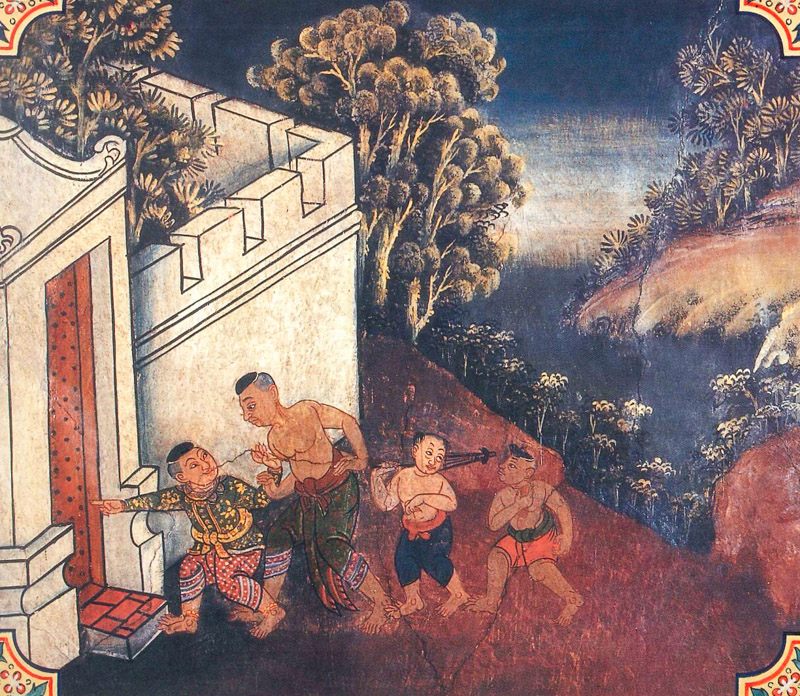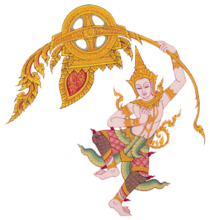
The Bodhisatta was once a dwarf archer. He believed his appearance would make it impossible to get a job with the king, so he hired a tall, muscular man named Bhimasena to front for him at the palace. Bhimasena told the king that he was the best archer on the continent, so the king hired him, along with the Bodhisatta, his “assistant.”
There was a fierce tiger in the forest that had eaten many people, so the king sent Bhimasena to kill it. The Bodhisatta told Bhimasena he could do this task by himself if he followed his plan. As instructed, Bhimasena took a group of villagers with him to the forest, and when they found the tiger, Bhimasena jumped into a thicket while the villagers ran forth and killed the tiger. When the tiger was dead, Bhimasena came out with a vine and, feigning anger, told everyone he was going to tie up the tiger and take it back to the king alive. He demanded to know who had killed it, but everybody kept their mouths shut out of fear, so Bhimasena got the credit from the king. This same trick was successfully used later to kill a dangerous wild buffalo. The Bodhisatta and Bhimasena collected hefty rewards from the king both times.
Bhimasena grew arrogant over these successes and began to disrespect the Bodhisatta, believing he could now get by on his own. When a rival army besieged the city, the king sent Bhimasena out atop an armored war elephant to lead his troops in battle. The Bodhisatta sat in the rear. As they reached the front lines, Bhimasena began to shake with fear and soiled himself. The Bodhisatta told Bhimasena to climb down, and he dashed into battle alone, captured the rival king, and took him back to the palace. Now knowing the truth about the pair, the king lavished honor on the Bodhisatta and sent Bhimasena back to his home.
In the Lifetime of the Buddha
Bhimasena was an earlier birth of one of the Buddha’s disciples who boasted about his noble, ultra-wealthy upbringing, saying his family’s slaves dressed and ate better than most regular people. It was later discovered that these stories were all lies. When the Buddha heard other disciples discussing how this dishonest disciple had not yet detached himself from desire, he told them this story so they knew that the dishonest disciple had the same bad personality in the past.
